We may receive a commission when you use our affiliate links. However, this does not impact our recommendations.
Like the life cycle of a frog, woodworkers go through a predictable pattern when acquiring tools. I’ve watched it play out with thousands of readers, hundreds of students and my own tool chest. Here are the 6 stages most of us go through..
Get Tools, Any Tools
When I first decided to make furniture, I knew I needed tools. So I went to a 24-hour Walmart in the middle of the night and bought a set of tools that looked useful, including a chisel, a block plane, a level, a coping saw and a miter box saw. I had no idea how to use them, but they looked like things a furniture-maker would own (as opposed to a plumber).
The next day I started to make some shutters for our house, and realized I needed other tools. So I went to the hardware store and picked up another pile of junk. This cycle continued for a long time until I decided to start reading about woodworking instead of making things up as I went along.
Obsess Over Statistics
You get every catalog out there. You find every website that sells tools and machinery. You discover tool reviews – wait there’s something better than a Walmart block plane? And you discover statistics. Table flatness, arbor runout, Rockwell hardness, the different grades of carbide.
The idea is that if you can process all of these statistics, you will be able to pick the best tools to replace your dimestore tools.
Thanks to the vast amount of data out there in forums, blogs, magazines and catalogs, you can spend years in this pupae state, learning about tools but not building much of anything.
Eventually, however, you feel you know enough. You buy some tools and start building things. And that’s when you discover the world of commercial jigs.
Buy Jigs to Replace Skills
The next two stages are dangerous because if you get stuck in one of them, you can go bankrupt. During the “jig” phase, you start using your statistically perfect tools and realize there is something missing because your results suck.
It can’t be the tool. You did all the reading, and it is the best one out there. What’s missing is skill, but you conclude that what is missing are the jigs and accessories.
Example: Your first hand-cut dovetails look terrible, so you buy a router and an entry-level commercial jig. After weeks of messing with the jig, your dovetails look better but they are so uniform that they look boring.
So you dip back into your statistics phase and read all about dovetail jigs and buy a commercial jig that allows you to variably space your tails. But this jig only has an 18” capacity, so….
If you look at the catalogs, you can solve every one of your skill deficiencies with a jig. Does your sharpening suck? We have 3,412 jigs for that. Want to cut tenons? We have jigs for the table saw, band saw and router. Can’t cut mortises by hand? Buy a mortiser (or a mortiser attachment for your drill press). Can’t saw straight? Here are jigs with magnets. Or maybe a track saw would be better.
Sadly, what most woodworkers find is that the jigs also require skill to use well. And so most of us plunge into building stuff and acquiring skills, with or without a few jigs.
Upgrade & Stockpile
As you become more skilled, you enter the most dangerous phase of all. This is the phase where you find you have some success with a tool, such as a shoulder plane, and so you buy seven examples of it to find the one you like the best. Different sizes, different grips, different makers.
You upgrade your benchtop table saw because you can finally understand the benefits of a contractor or cabinet saw. You end up with four smoothing planes, six routers and a huge credit card bill. You start comparing scratch awls and screwdrivers. You divert your online tool purchases to your workplace so your spouse doesn’t notice.
I’ve seen people get stuck in this phase, resign themselves to it and become collectors. The rest of us have a transformative moment coming.
The Great Psychic Break
At some point, you realize that the question “How do I become a better woodworker?“ cannot be answered with: “More tools.” Having lots of tools is like having 43 children. It’s a lot of work to take care of them all. Sharpening and tuning an enormous stable of tools is no fun, and it interferes with furniture making.
So you cull the herd. You sell, give away or simply store the tools and jigs you never use. (This is why Craigslist is so successful.) You settle on a core set of tools that don’t require too much maintenance and allow you to build the things you want to build.
You might replace a tool that breaks or wears out. But the goal now is to just work with what you have.
Please, No More Tools
Eventually, some of us reach the stage where additional tools are a burden. I have visitors who stop by my shop and try to give me perfectly good tools that were handed down from their relatives. I always decline.
If I take that free tenon saw, I’m obligated to fix it up and store it. And that will take time away from my woodworking. Owning tools is a privilege, obligation and burden.
And when my tools wear out, I’m loathe to replace them. They have served me so well for so many years that I find a way to repair them or use their parts to fix other tools.
At this phase, my obsession is not with block planes, but with my block plane. If I misplace it, I feel a bit of panic until I locate it. I am reluctant to loan tools out – after someone else uses my tools they feel different to me.
What’s next? Is there a seventh phase? Or maybe I’ll just start over and get into motorcycles.
— Christopher Schwarz
Here are some supplies and tools we find essential in our everyday work around the shop. We may receive a commission from sales referred by our links; however, we have carefully selected these products for their usefulness and quality.



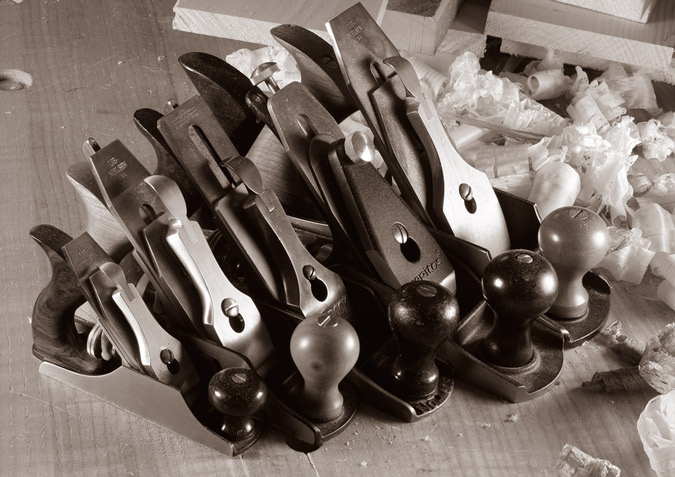
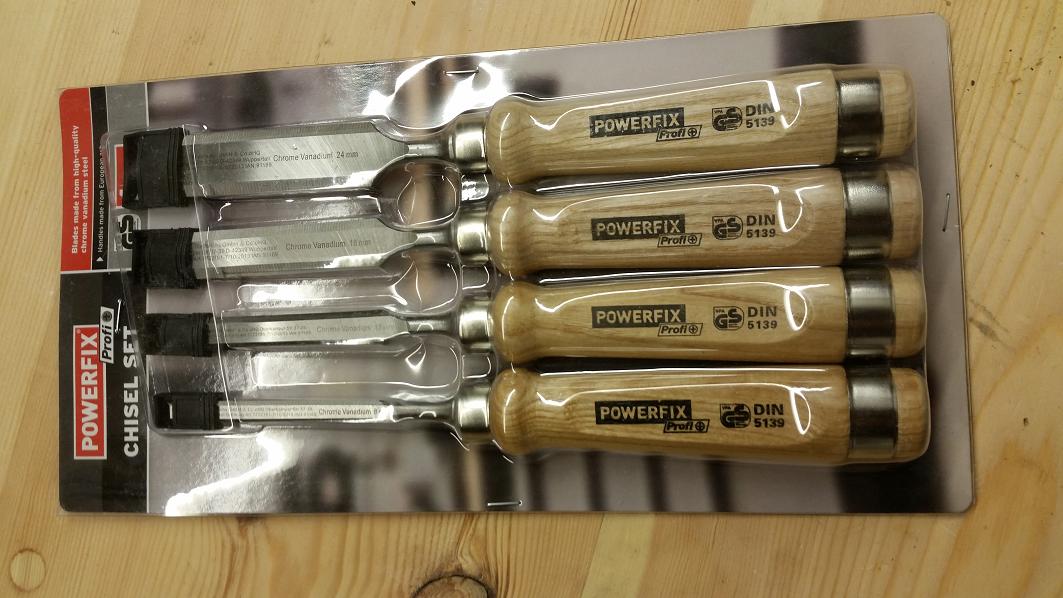

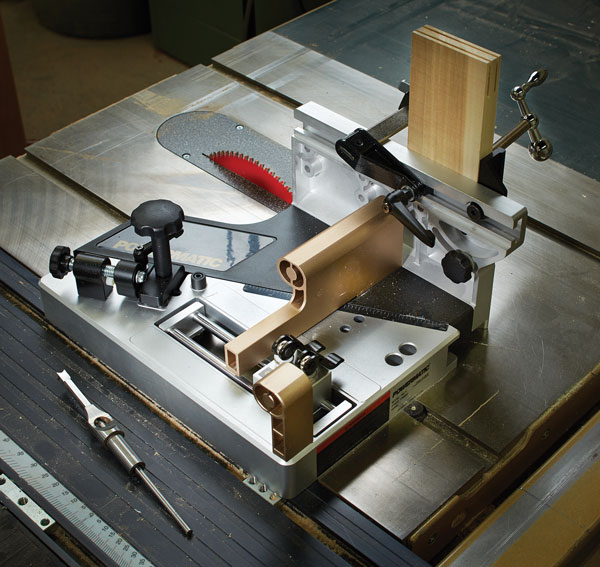
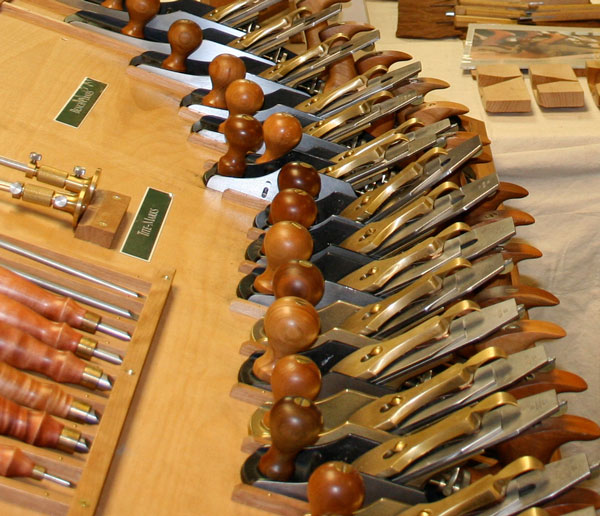
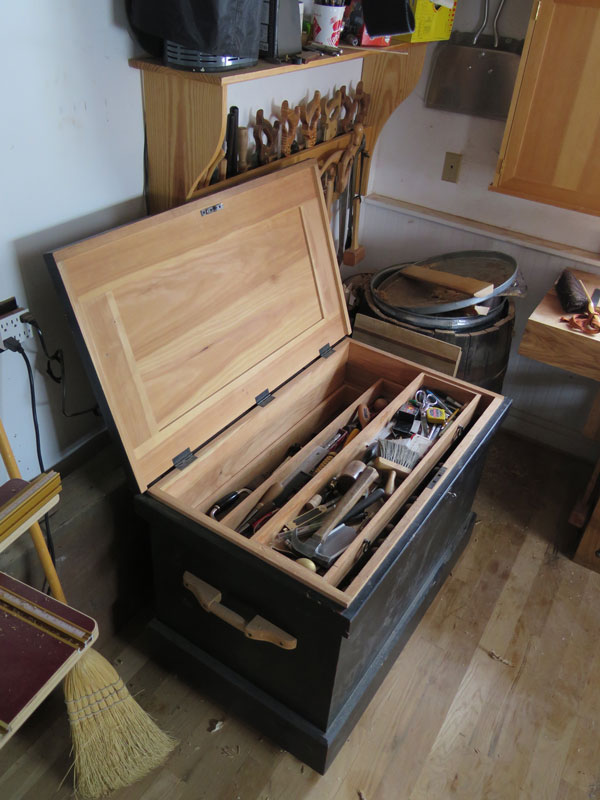
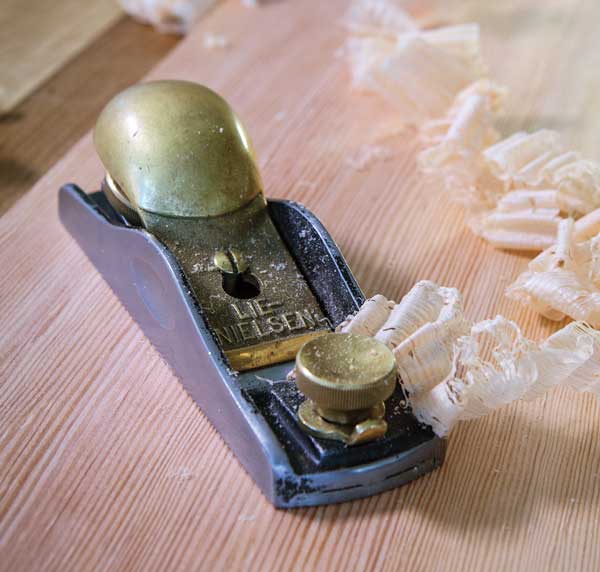







I’m certain that somewhere in these phases is a branch that exists called “systainer disease”! Its a disorder certain woodworkers develop after getting that first really precious tool. It includes paying hundreds of additional dollars to not only protect these tools, but never using them–because they don’t know what is where, they have to unstack them, unlock them, and darn it, they may get dust on it. A cheap oscillating multi-tool that regularly lies on the bench often becomes the signature “go-to” of someone with systainer disease!
Pretty spot on Chris! I think there even more “waste” than mentioned that’s associated with the early stages–metal workbenches, plastic work stands, plastic cabinets, etc. It took me a long time and a lot of money to realize the best solution for me was to simply custom build such items in the first place!
My brother in law texted me at Christmas, “what tools do you need for your woodshop?” The question made me think first, “Why do grown men only related by marriage feel obligated to exchange Christmas presents at nearly the age of 40?” Secondly, I thought, since the traditional give amount of $20 has been typically spent over the years, “what piece of crap $20 tool do I want to be burdened with storing some where next?” I decided to tell him that the only tools left for me to purchase cost more than his monthly car payment that I was good on woodworking tools. It was a liberating moment. He ended up getting me a nice set of Klein wire strippers instead since I mentioned my desire to rewire my garage.
My nephew on the other hand bought my dad a set of crasps. Its the thought that counts.
Chris, if you get into the motorcycle thing, call me, I can save you lots of grief, time and money!
Try to avoid the eBay stage… it is a subset of the hoarder stage but worse because you are somehow tempted to buy things that you can’t touch.
Funny i just reach the last phase this past year. Went through everything and sold what I don’t use and set out to sharpen my skills. Funny how my woodworking had gotten better this year.
Kind of funny Chris, but when you go to the handtoollist.com web site and look at the recommended tool lists, your list from the Anarchist tool chest is 70 items while several other lists only have 21 to 27 items.
This so true. I have a woodworking coworker who has 5 to 7 tools for every one I have. I build 10 to 20 projects for everyone he does. I am reducing the number of tools I have and am happier
I meant to ask earlier but I have to sell off my power and how tools: Lie Nielsen and Veritas/Lee valley hand planes etc, what is the safest venue?
I didn’t know you knew me at all, but it seems you know me very well.
In the seventh phase you have given away all of your tools and you can make anything with a good pocket knife.
Hole. E. Crap.
I wholeheartedly agree with Tom’s comment … “Scary accurate”.
Scary accurate.
The Anarchist Tool Chest helped me to realize ‘oh crap – I’ve become a collector, and I now have more stuff that needs to be fixed up than I will ever have time to fix’